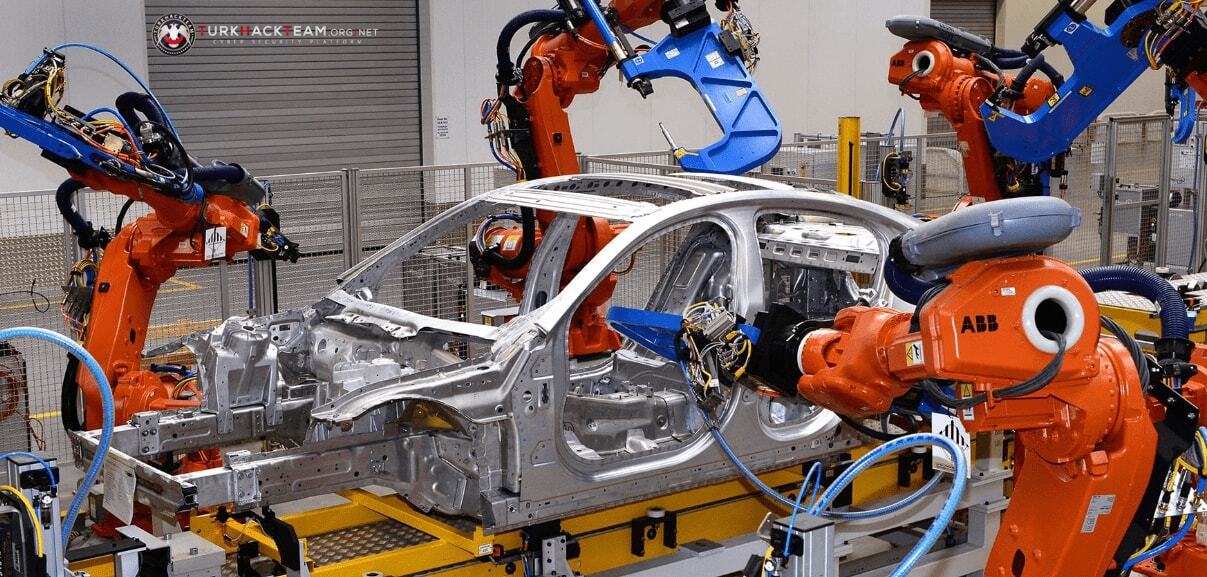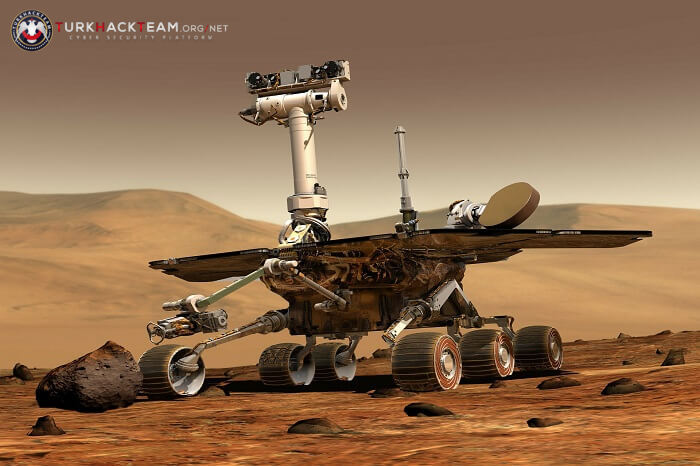What is a Robot?
Robots can be defined as machines created to automatically perform one or more tasks, typically achieving faster and more precise operations compared to humans. Such machines are often referred to as autonomous robots, and examples include robots used in factories for production purposes.
They can be programmed to automatically perform specific tasks or controlled by an operator from a close (physical) or distant location through remote control.
Robots can be designed and programmed in various shapes, sizes, and features. They are commonly used to perform repetitive tasks or handle tasks that are difficult or dangerous for humans. Robots are actively utilized in various industries, including healthcare, agriculture, food production, transportation and logistics, construction, and mining, covering virtually every aspect of life.

Some robots can behave like humans or appear human-like with advanced artificial intelligence features, while others, as mentioned earlier, can be defined as mechanical or industrial robots designed for precise operations, specifically for production purposes. These robots are engineered to perform a specific task.
Most robots are controlled and programmed by a computer or other intelligent devices.
Types of Robots in Detail:
Robots can be classified in various ways based on different designs and functions. Depending on their functions, robots can be used in industrial, medical, military, agriculture, cleaning, search and rescue, space, and many other fields. However, generally, robots can be categorized into the following

Industrial Robots: Robots used in manufacturing lines in factories. For example, they can be used in welding, painting, packaging, and assembly processes.
Service Robots: Robots used in service sectors such as homes, offices, and hotels. For instance, cleaning robots, waiter robots, receptionist robots, etc.
Military Robots: Robots designed for military purposes, such as bomb disposal robots, unmanned aerial vehicles (UAVs), unmanned ground vehicles (UGVs), submarines, etc.
Medical Robots: Robots used in surgical procedures and other medical devices. For example, robotic systems used in laparoscopic surgery, telemedicine systems, etc.
Agricultural Robots: Robots used in agricultural processes. For example, harvest robots, automatic irrigation systems, etc.
Research Robots: Robots used for research purposes. For example, underwater exploration robots, space research robots, etc.
Educational Robots: Robots used for educational purposes. For example, programming learning robots, artificial intelligence training robots, etc.
Home Robots: Robots used in households. For example, vacuum robots, automatic lawn mowers, kitchen robots, etc.
Personal Assistant Robots: Robots designed to assist individuals with disabilities, the elderly, and special needs. For example, prosthetic arms and legs, wheelchairs, robots for the visually impaired, etc.
Importance of Robots
Robots play a significant role in many aspects of our lives and are increasingly being used. Here are some areas where robots are important:

Industrial Production: Industrial robots make tasks on production lines faster, more accurate, and safer. This reduces production costs for businesses and makes them more efficient.
Medicine: Surgical robots make surgeries less invasive, shortening patients' recovery times. Additionally, they are important for the safety of healthcare workers who would otherwise have to work in harmful conditions.
Military: Military robots can assist soldiers in reconnaissance, surveillance, and intervention without risking their lives. Robots like bomb disposal units also play a life-saving role.
Agriculture: Agricultural robots make harvest processes faster and more efficient, leading to increased productivity in food production and reduced fatigue for agricultural workers.
Home: Home robots make household chores easier and less tiring. Robots like vacuum cleaners, washing machines, and dishwashers make household tasks faster and more efficient.
Exploration: Research robots can provide valuable information by exploring space, underwater, underground, or other challenging conditions for the benefit of humans.
Education: Robots can help students gain knowledge about technology. Students can gain experience in subjects like programming and artificial intelligence.
How to Build a Robot?
Building a robot is a complex process that involves various components. The first step is to determine what type of robot you want to build. The design and construction of a robot include the following steps:
Concept Design: Initially, you need to decide on the tasks the robot will perform and the features it will have. Factors such as the size, shape, movement type, and other features of the robot may need to be determined at this stage.
Hardware Selection: Hardware selection involves determining the components that will be used in the construction of the robot. At this stage, you may need to choose parts such as motors, actuators, sensors, control boards, batteries, and other components.
Mechanical Design: Mechanical design involves the design of the physical structure of the robot. This stage includes designing mechanical elements such as the body of the robot, joint and hinge connections, gears, chains, belts, and other components.
Electronic Design: Electronic design involves the design of the electronic components of the robot. At this stage, circuit designs for control boards, sensors, motor drivers, and other components are developed.
Software Development: Software development is necessary for programming the robot. At this stage, algorithms and control programs required for the robot to perform its tasks are written.
Prototype Building: Prototype building involves producing a physical prototype of the robot's design. During this stage, the design is tested, improved, and changes are made to prepare for the final production.
Production: Finally, the prototype needs to be finalized, and mass production must be carried out.
Building a robot is a highly complex process that requires expertise in various engineering fields. Therefore, advanced engineering knowledge and experience are necessary to build a robot.
Best Regards...
Source : @deltaturk https://www.turkhackteam.org/konular/robot-nedir-ve-nasil-yapilir-ogrenelim.2037106/

Robots can be defined as machines created to automatically perform one or more tasks, typically achieving faster and more precise operations compared to humans. Such machines are often referred to as autonomous robots, and examples include robots used in factories for production purposes.
They can be programmed to automatically perform specific tasks or controlled by an operator from a close (physical) or distant location through remote control.
Robots can be designed and programmed in various shapes, sizes, and features. They are commonly used to perform repetitive tasks or handle tasks that are difficult or dangerous for humans. Robots are actively utilized in various industries, including healthcare, agriculture, food production, transportation and logistics, construction, and mining, covering virtually every aspect of life.

Some robots can behave like humans or appear human-like with advanced artificial intelligence features, while others, as mentioned earlier, can be defined as mechanical or industrial robots designed for precise operations, specifically for production purposes. These robots are engineered to perform a specific task.
Most robots are controlled and programmed by a computer or other intelligent devices.
Types of Robots in Detail:
Robots can be classified in various ways based on different designs and functions. Depending on their functions, robots can be used in industrial, medical, military, agriculture, cleaning, search and rescue, space, and many other fields. However, generally, robots can be categorized into the following

Industrial Robots: Robots used in manufacturing lines in factories. For example, they can be used in welding, painting, packaging, and assembly processes.
Service Robots: Robots used in service sectors such as homes, offices, and hotels. For instance, cleaning robots, waiter robots, receptionist robots, etc.
Military Robots: Robots designed for military purposes, such as bomb disposal robots, unmanned aerial vehicles (UAVs), unmanned ground vehicles (UGVs), submarines, etc.
Medical Robots: Robots used in surgical procedures and other medical devices. For example, robotic systems used in laparoscopic surgery, telemedicine systems, etc.
Agricultural Robots: Robots used in agricultural processes. For example, harvest robots, automatic irrigation systems, etc.
Research Robots: Robots used for research purposes. For example, underwater exploration robots, space research robots, etc.
Educational Robots: Robots used for educational purposes. For example, programming learning robots, artificial intelligence training robots, etc.
Home Robots: Robots used in households. For example, vacuum robots, automatic lawn mowers, kitchen robots, etc.
Personal Assistant Robots: Robots designed to assist individuals with disabilities, the elderly, and special needs. For example, prosthetic arms and legs, wheelchairs, robots for the visually impaired, etc.
Importance of Robots
Robots play a significant role in many aspects of our lives and are increasingly being used. Here are some areas where robots are important:

Industrial Production: Industrial robots make tasks on production lines faster, more accurate, and safer. This reduces production costs for businesses and makes them more efficient.
Medicine: Surgical robots make surgeries less invasive, shortening patients' recovery times. Additionally, they are important for the safety of healthcare workers who would otherwise have to work in harmful conditions.
Military: Military robots can assist soldiers in reconnaissance, surveillance, and intervention without risking their lives. Robots like bomb disposal units also play a life-saving role.
Agriculture: Agricultural robots make harvest processes faster and more efficient, leading to increased productivity in food production and reduced fatigue for agricultural workers.
Home: Home robots make household chores easier and less tiring. Robots like vacuum cleaners, washing machines, and dishwashers make household tasks faster and more efficient.
Exploration: Research robots can provide valuable information by exploring space, underwater, underground, or other challenging conditions for the benefit of humans.
Education: Robots can help students gain knowledge about technology. Students can gain experience in subjects like programming and artificial intelligence.
How to Build a Robot?
Building a robot is a complex process that involves various components. The first step is to determine what type of robot you want to build. The design and construction of a robot include the following steps:
Concept Design: Initially, you need to decide on the tasks the robot will perform and the features it will have. Factors such as the size, shape, movement type, and other features of the robot may need to be determined at this stage.
Hardware Selection: Hardware selection involves determining the components that will be used in the construction of the robot. At this stage, you may need to choose parts such as motors, actuators, sensors, control boards, batteries, and other components.
Mechanical Design: Mechanical design involves the design of the physical structure of the robot. This stage includes designing mechanical elements such as the body of the robot, joint and hinge connections, gears, chains, belts, and other components.
Electronic Design: Electronic design involves the design of the electronic components of the robot. At this stage, circuit designs for control boards, sensors, motor drivers, and other components are developed.
Software Development: Software development is necessary for programming the robot. At this stage, algorithms and control programs required for the robot to perform its tasks are written.
Prototype Building: Prototype building involves producing a physical prototype of the robot's design. During this stage, the design is tested, improved, and changes are made to prepare for the final production.
Production: Finally, the prototype needs to be finalized, and mass production must be carried out.
Building a robot is a highly complex process that requires expertise in various engineering fields. Therefore, advanced engineering knowledge and experience are necessary to build a robot.
Best Regards...
Source : @deltaturk https://www.turkhackteam.org/konular/robot-nedir-ve-nasil-yapilir-ogrenelim.2037106/








